
Category: Audio Gear, etc.
Common-sense stereo-system advice from a record producer/engineer.
Say “Saluton!” To “Future Audiophile.”
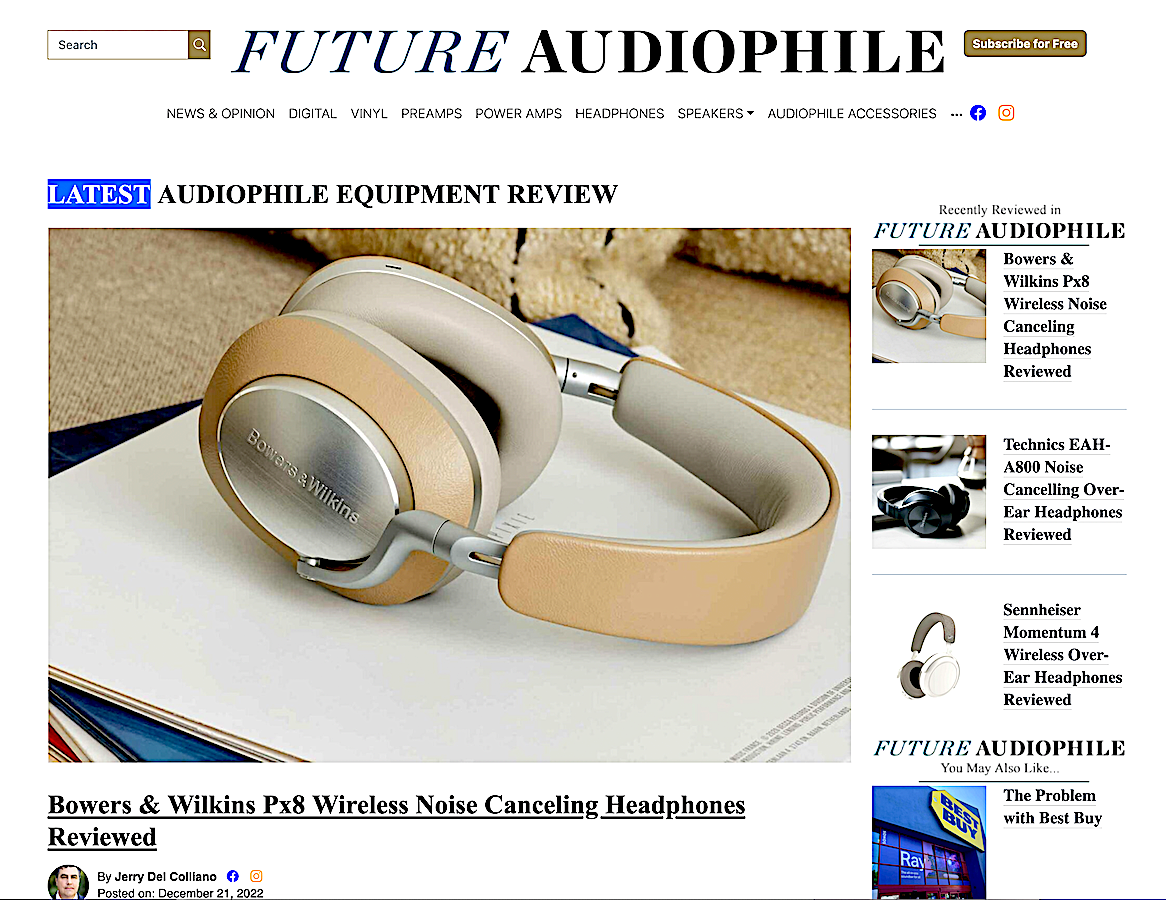
Jerry del Colliano started out as a music student, studying music and Music Business courses in tandem. Then, in the 1990s, he was hired by Christopher Hansen Ltd., the legendary Los Angeles high-end audio dealer. In a twinkling, Jerry’s passion for music catapulted him into the upper echelons of audio retailing, being a standout seller of Wilson Audio Specialties loudspeakers. Del Colliano later worked for (the man; the myth; the legend!) Mark Levinson, at Cello Music and Film, also in Los Angeles.
He later went into media and web journalism, publishing AudioRevolution.com, HomeTheaterReview.com, and AudiophileReview.com. More recently, he has launched a new webzine targeting younger music lovers and the audiophile-curious.
The “Unique Selling Propositions” of Future Audiophile are that audiophile “terms of art” (or, if you prefer, jargon) are usually linked to definitions or explainers; and that there is a standard template that all equipment reviewers must follow.
The Future Audiophile review template is so Socratic in method that it gives me flashbacks to law school… but it serves the purpose of reining in authorial flights of fancy (or, recountings of free trips to Sardinia for molto gelato gratuito–ahem).
Examples:
What Makes the Parasound Halo P 6 So Special?
Why Should You Care About the Parasound Halo P 6 ?
Some Things You Might Not Like About the Parasound Halo P 6
Listening to the Parasound Halo P 6 Preamplifier…
Does the Parasound Halo P 6 Have Any Resale Value?
Who Is the Competition for the Parasound Halo P 6?
Final Thoughts on the Parasound Halo P 6 Preamplifier
… you get the idea.
In an email, del Colliano told me that he is “aiming to reach younger and more diverse fans who are looking more for the lifestyle benefits of listening to music, as opposed to some of the more voodoo-inspired black magic that the hobby sometimes flirts with.” He also told me that Future Audiophile has “reviewers who have over 40 years of audiophile experience, as well as audiophile reviewers who just turned 40 years old.”
So, I wish them much success.
Note, I do not plan to write for Future Audiophile, in that I have been neglecting my own blog, and I have a hugely important recording project in the works.
# # #
JBL L100 Classic Loudspeaker
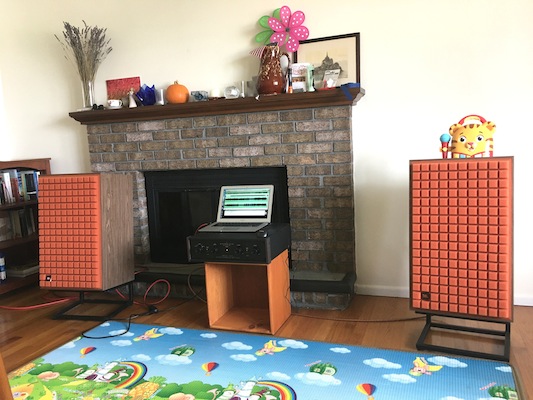 Photo by John Marks
Photo by John Marks
JBL’s L100 Classic loudspeaker has a United States MSRP of $4000/pr. (stands not included).
However, if you want to make them sound like the proverbial “a million bucks,” here’s how to do it:
(1) Connect a pair of JBL L100 Classics to your amplifier.
(2) Subscribe to the Qobuz streaming service (they have a risk-free 30-day trial offer). Feed that signal to your Digital to Analog Converter.
(3) Dial up the 24-bit hi-res version of Joel Fredericksen & Ensemble Phoenix’s astonishing feat of creativity and musicianship, the Nick Drake tribute album Requiem for a Pink Moon.
Wow. The first 60 seconds of Track 1 should convince you. The L100s sound like a million bucks. I unhesitatingly recommend audition of the L100 Classic to anyone shopping for loudspeakers in their price tier.
However, my take on the reality (of all such situations) is that every loudspeaker ever designed incorporates tradeoffs. To get this, you have to give up that. Even if the only thing you are giving up on is affordabilty.
The L100 Classic is remarkably affordable, considering its dynamics and its bass performance. If I were still writing for Stereophile magazine, I’d put it in for the coveted “$$$” high-value indication in the Recommended Components List.
But when you design a loudspeaker that has perhaps 80% of the bass and dynamics of loudspeakers costing four or five times as much (or even more; I am talking about loudspeakers in the $15,000 to $28,000 range), but at 20% of the cost of the more expensive loudspeakers, there are, of course, going to be tradeoffs and compromises. That’s my take on the reality.
More on Pink Moon, more on the social and cultural context of and the impact of the original L100, and more comments on the sound of the new one, after the jump. Continue Reading →
Graham Audio Chartwell LS6 Loudspeaker
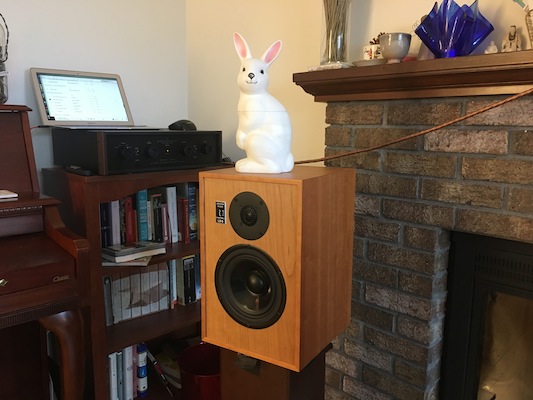 Photo by John Marks
Photo by John Marks
[Note: The bunny atop the LS6 is a gesture in memory of Art Dudley. I am certain that Art would have loved this loudspeaker. I think that it is one measure of Art’s impact upon the high-end audio community that most people who read this review will immediately grasp much of what this loudspeaker is all about, just from reading only that.]
Graham Audio’s Chartwell LS6 loudspeaker is a labor-of-love audio product that is seriously competent in terms of engineering, but also characterful in terms of its presentation of music—especially the human voice. Therein lies the complexity.
The Chartwell LS6 evokes complex reactions in part because of its UK BBC “thin-wall cabinet” design heritage. However, heritage is not destiny. In any event, the LS6 is more of a “clean-sheet-of-paper” design than a slavish copy of a loudspeaker that is nearly 50 years old.
The primary engineering difference is that the LS6 is a ported-enclosure design, whereas the iconic BBC LS3/5A is a sealed-box design. Therefore the LS6 is, to me, more of an updating of the idea of a “Classic BBC-Designed Studio Monitor” than it is an updating of any particular loudspeaker.
The Chartwell LS6 deserves to be judged in comparison to its older BBC-derived relatives—but also, by today’s standards as well. Either way, it is a winner. In addition, it is solid value for money.
A philosophical diversion or two follows, after the jump. Continue Reading →
Moonriver Audio Model 404 Stereo Integrated Amplifier
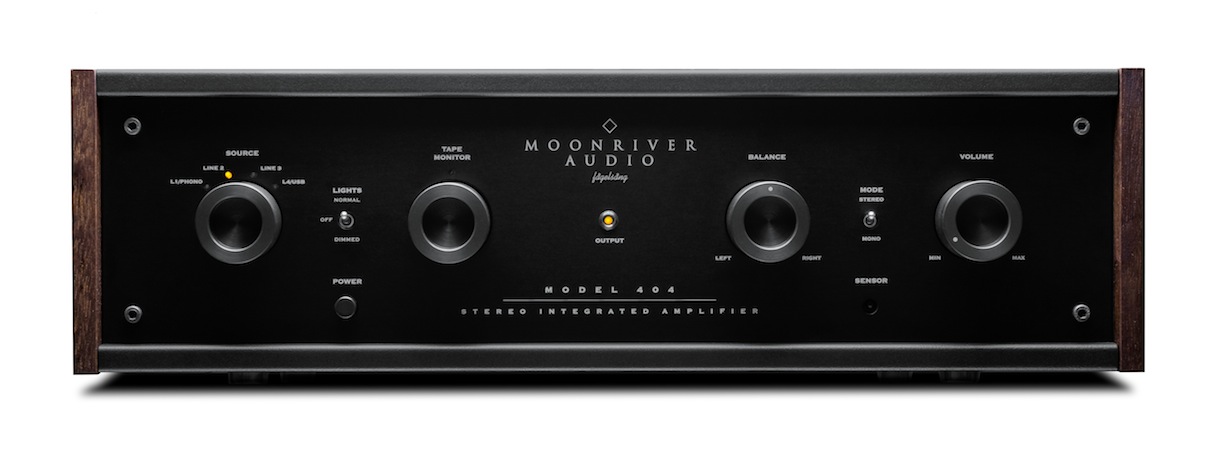
The Moonriver Audio Model 404 is a solid-state stereo integrated amplifier with a rated output of 50 Watts per channel. The Model 404 combines a preamplifier stage that consists entirely of discrete devices (and therefore, there are no integrated-circuit chips in the preamplifier), and a power-amplifier stage that is Class A/B linear (and therefore, the Model 404 is not a Class-D digital-switching amplifier).
The company name of Swedish high-end-audio newcomer “Moonriver Audio” is a tribute to the song “Moon River,” from the Audrey Hepburn (1929-1993) film Breakfast at Tiffany’s. “Moon River” won for Henry Mancini (music) and Johnny Mercer (lyrics), the 1962 Academy Award (“Oscar”) for “Best Original Song.” (The screenplay was based on a novella by Truman Capote. He cried all the way to the bank.)
Therefore, the first important point is: the Moonriver 404 is hand-built in Sweden, apparently by someone who has fond memories of Audrey Hepburn.
(And so, therefore, the Moonriver 404 is not built in China by people who—most likely—do not have fond memories of Audrey Hepburn.)
The second important point is that the Moonriver 404 (US MSRP $3500; but there are optional modules) is a tremendously serious audio product. As far as I can tell, the Moonriver 404’s only “flaw” is that it never calls attention to itself. However, that’s because it only calls attention to the music.
More on what I mean by “a tremendously serious audio product,” after the jump. And more about Audrey Hepburn!
Continue Reading →
The Audio Equipment I Regret Not Having Bought, Way Back When (Part 1)
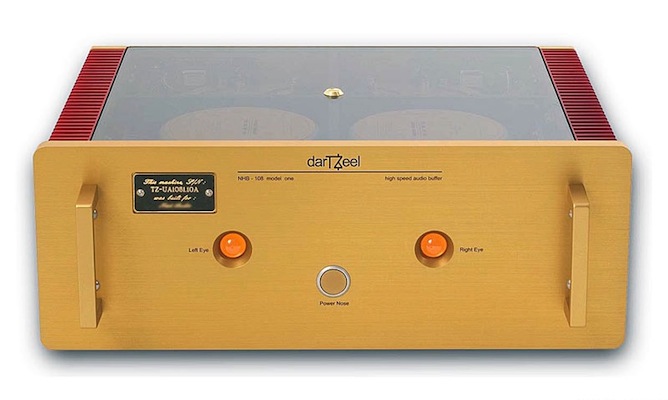 darTZeel NHB-108 model one stereo power amplifier
darTZeel NHB-108 model one stereo power amplifier
Regrets, I have a few… even about reviewer-loan audio equipment I now wish I had bought, way back when.
The first audio magazine I wrote for was Wayne Green’s Digital Audio magazine. The première issue came out in September, 1984. The articles listed on the cover included “How to Buy Your First CD Player.” (Snort.) I was the founding classical-music columnist (“Classical ReMarks”).
I got that columnist job by pure happenstance. Someone I knew (Chuck Dougherty) worked for the regional hi-fi chain Tweeter, Etc. Chuck also was a computer whiz who moonlighted writing for one of Wayne Green’s computer magazines. Word got around to Chuck that Wayne Green Enterprises needed someone who knew about classical music, and who also could write. Seeing as I was already writing reviews of classical music concerts and recitals for the Providence Journal, I seemed to be a good fit. Wayne Green’s little publishing empire was based in New Hampshire. As it happened, I was visiting New Hampshire frequently, in that I was organizing and presenting the chamber-music performing-arts series at Thomas More College in Merrimac.
While writing for Digital Audio, I not only reviewed CDs and wrote a column; I also interviewed musicians, including André Watts, Michael Tilson Thomas, and Joseph Silverstein. Although my duties did not include equipment reviews, I did have occasion to drool over (or lust over) some pieces of gear. I moved on to the Planet HiFi website (which was where I first reviewed audio equipment, and not just recordings), and then back to print journalism, first with The Absolute Sound, and then Stereophile.
Please note, this mini-series is limited to products that I had the opportunity to hear in my home, as part of a formal review process. There are many excellent products I would consider buying, but which I just have not had the opportunity to hear at home; the best examples I can think of at the moment are the excellent radial loudspeakers from MBL.
After the jump, I recall some of the “big-fish” (as well as some “little fish”) audio-review-loan components that got away. Continue Reading →
An Excellent, No-Cost (free!), Sound-Pressure-Level (SPL) Meter iPhone app
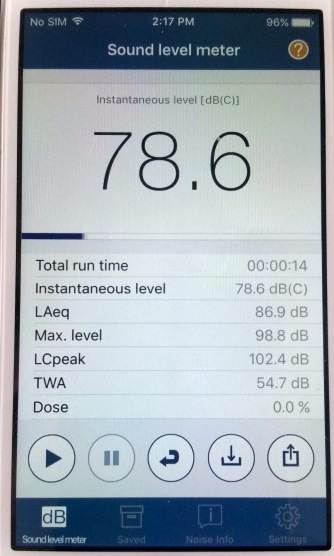
This one will be short and sweet.
The National Institute of Occupational Safety and Health (NIOSH) hearing-loss team evaluated 192 sound-measurement applications for the iOS and Android smartphone platforms, to examine their accuracy and user-friendliness in comparison to standalone, professional-quality sound-measurement instruments.
Of the 192 tested applications, only four (all for the iOS platform) met NIOSH’s selection criteria for functionality, features, and calibration capability. NIOSH hearing-loss researchers collaborated with one of the iOS developers whose applications met their criteria to develop an occupationally-centric sound-measurement iPhone app, to be distributed at no cost to the occupational safety-and-health community, as well as to the general public.
So there you have it. The app is only for the iPhone, for reasons of reliability of microphone-equalization compensation. And all it does is measure and log SPL; it has no spectral analysis or RTA functions. I have found it convenient and intuitive to use. The NIOSH SPL Meter app can be downloaded at no charge here. Please be sure to download and study the user guide.
# # #
Arturo Delmoni Analog Master Tape to Direct Stream Digital (DSD256) Crowdfunding Project
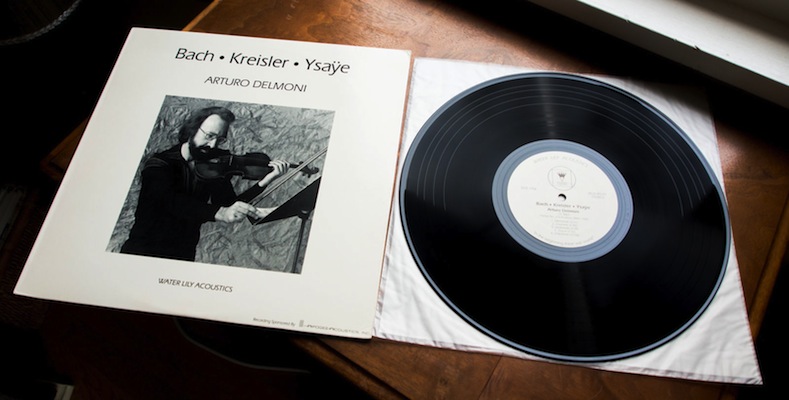 Photo credit: Geoff Zagarola of La Naranja eBay auctions.
Photo credit: Geoff Zagarola of La Naranja eBay auctions.
I find it hard to believe that 2018 marks the 30th anniversary of the recording session for Arturo Delmoni’s legendary 1988 Water Lily solo-violin recital.
Recorded at night in a monastery chapel, Delmoni’s compelling performances combine thrilling technique with thought-provoking musical insights. This minimalist-audiophile, two channels from two microphones, analog-tape and tubed-electronics production remains a reference for the recorded sound of a violin.
The violin in question was made by J. B. Guadagnini in 1780. I am very certain, based on reliable oral-history testimony, that in 1949, Dr. Delmoni’s Guadagnini was played on Charlie Parker with Strings by Max Hollander, the concertmaster of that string section. How about them apples?
The Delmoni-Water Lily project was my idea. I also helped bring it to fruition. And I now own the master tapes… . Therefore, I am not about to argue with eBay seller Bob La Naranja, who wrote of the (used) Delmoni Water Lily LP he recently sold (for more than $100):
Incredible solo-violin renditions of Bach, Kreisler, and Ysaÿe.
Perhaps one of the greatest solo-violin audiophile records—the recording is sublime.
(Except, I might have left out the word “perhaps”… .)
My current project is to arrange for a 11.2mHz/DSD256fs (“Quad DSD”) transfer of the master tapes, selling the download files via an informal crowdfunding venture. How that works, and for more on what all the above means, please click on the jump link, where you will also find generous sound samples. Continue Reading →
In Memory of David A. Wilson II, 1944-2018
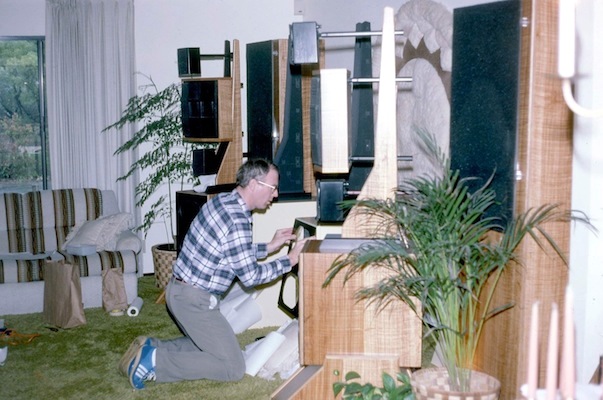 David Wilson, assembling a WAMM loudspeaker, 1986. Courtesy of Wilson Audio.
David Wilson, assembling a WAMM loudspeaker, 1986. Courtesy of Wilson Audio.
In Chicago in 1972, Peter McGrath was holding down a part-time job in a stereo store, while he pursued his graduate studies in fine art.
For those who were not alive and aware at the time, the early 1970s witnessed the dawning of the second Golden Age of Hi-Fi. The first Golden Age encompassed the late 1940s through early 1960s. Pioneering companies included Fisher, McIntosh Laboratory, and Marantz (electronics); Klipsch (horn loudspeakers); QUAD (electrostatic loudspeakers, and electronics); and Acoustic Research (acoustic-suspension loudspeakers, and turntables). The great hi-fi companies of the 1950s established the component stereo system (consisting of a turntable and sometimes a tuner or reel-to-reel tape deck, vacuum-tube amplification, and loudspeakers) as a vital part of what was understood to be “the good life.”
I think it is tremendously important to point out that although hi-fi started out as a hands-on hobby for technically-inclined males, by the late 1950s, high-quality music playback in the home via stereo components was almost universally regarded as something to aspire to—even if in many cases, people had to settle for suitcase stereos or the massive pieces of furniture called console stereos. Going back and reading general-circulation magazines of the 1950s (as well as male-oriented magazines such as Esquire and Playboy), one is struck by the prevalence of advertisements for hi-fi components and loudspeakers, as well as for “culturally improving” book and record clubs.
More context, backstory, and appreciations of David A. Wilson, after the jump link. Continue Reading →
Bricasti Design M15 Solid-State Stereo Amplifier
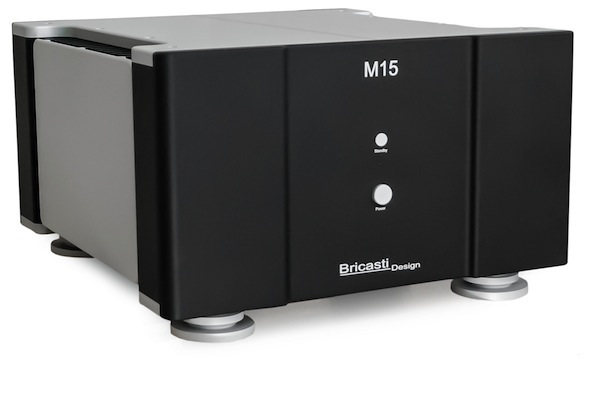
I just had a rather arresting (in the sense of, one has to stop doing anything else, and just listen) listening experience. I want to share it with you. The music I was listening to is from an underappreciated (really, almost unknown) classic-era jazz recording; but I have heard it many times.
However, I had never heard it like this—it was a real “Holy Poop!” moment. (The truth is, I did exclaim rather loudly, 19 seconds into my favorite track.)
The recording is Guitar Forms, guitarist Kenny Burrell’s 1965 orchestral collaboration with arranger and conductor Gil Evans, the same Gil Evans of Miles Davis Sketches of Spain fame. (Guitar Forms remastering, Verve 314 521 403-2; imported CD from Amazon; also available streaming from Tidal.)
Creed Taylor (later of CTI, the crossover label that so many loved to hate) produced, while Rudy van Gelder was the engineer. Session players included Lee Konitz, Bill Barber (both of whom played on the Birth of the Cool recorded live performances, as well as the recording sessions), Ron Carter, and Elvin Jones. How can you beat that? Guitar Forms is a wonderful recording, so even if you are not in the market for a new power amp, you owe it to yourself to read on. A generous sound sample and more audio commentary are to be found after the jump. Continue Reading →
Superlux S502 ORTF Microphone Array
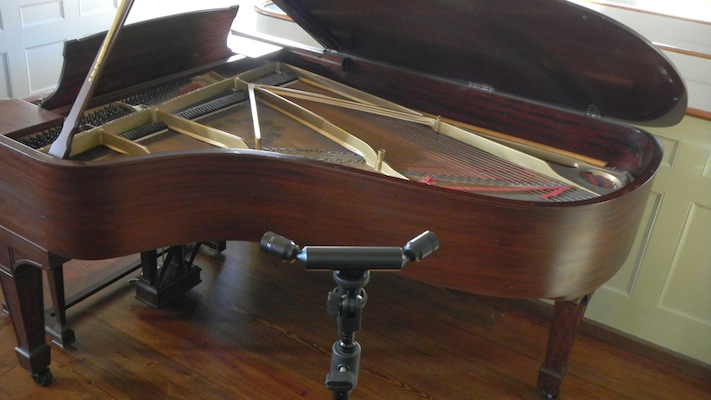 Photo © John Marks
Photo © John Marks
In my recent post about my using Sound Devices’ USBPre 2 as a location-live recording interface, I mentioned the “near-coincident” ORTF stereo microphone technique. In that case, I used an AEA stereo mic protractor ($22) to position two Pearl (Sweden) CC22 cardioid-pattern side-address microphones in the so-called ORTF array. The ORTF array is a compromise between crossed-axis “coincident” X/Y cardioid or figure-8 microphones, and “A-B” widely-spaced omnidirectional microphones. The idea is to mimic the response of the human head/ear/brain system concerning horizontal-plane stereo cues, while preserving good compatibilty to monophonic mix-down, by which I mean the avoidance of self-cancellation. Continue Reading →


